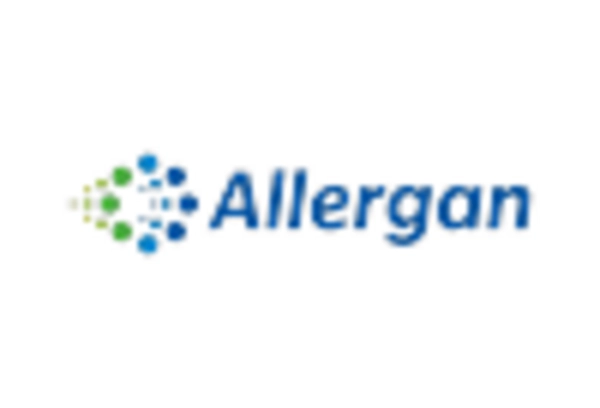Rising Healthcare Expenditure
The increase in healthcare expenditure in the US is a significant driver for the drug allergy market. With healthcare spending projected to reach over $4 trillion by 2025, there is a growing focus on improving patient care, including the management of drug allergies. This financial commitment allows for better access to allergy testing and treatment options, thereby expanding the market. The drug allergy market is likely to benefit from this trend, as more funds are allocated towards innovative therapies and diagnostic tools. As patients gain better access to healthcare services, the demand for effective allergy management solutions is expected to rise, further propelling market growth.
Increasing Incidence of Drug Allergies
The rising incidence of drug allergies in the US is a critical driver for the drug allergy market. Recent studies indicate that approximately 10% of the population experiences some form of drug allergy, leading to heightened awareness among healthcare providers and patients alike. This increase in cases necessitates improved diagnostic and therapeutic options, thereby expanding the market. The drug allergy market is likely to see a surge in demand for allergy testing kits and treatment modalities as more individuals seek medical attention for their allergic reactions. Furthermore, the economic burden associated with drug allergies, estimated at billions of dollars annually, underscores the need for effective solutions, driving innovation and investment in this sector.
Growing Demand for Personalized Medicine
The trend towards personalized medicine is reshaping the drug allergy market. As healthcare moves towards individualized treatment plans, understanding a patient's specific drug allergies becomes paramount. This shift is driving the development of targeted therapies and customized treatment regimens, which are more effective and safer for patients. The drug allergy market is witnessing an increase in research and development efforts aimed at creating personalized allergy management solutions. This focus on tailored healthcare is expected to enhance patient outcomes and satisfaction, potentially increasing market revenues significantly as more healthcare providers adopt these personalized approaches.
Regulatory Support for Allergy Management
Regulatory bodies in the US are increasingly supporting initiatives aimed at improving allergy management, which is positively impacting the drug allergy market. Recent guidelines and recommendations from organizations such as the FDA emphasize the importance of allergy testing and management protocols. This regulatory support encourages healthcare providers to adopt best practices in diagnosing and treating drug allergies. The drug allergy market benefits from this environment, as it fosters innovation and the introduction of new products that comply with safety standards. As regulations evolve, companies are likely to invest more in research and development, further driving market growth.
Technological Innovations in Allergy Testing
Technological advancements in allergy testing are significantly influencing the drug allergy market. Innovations such as molecular diagnostics and point-of-care testing are enhancing the accuracy and speed of allergy detection. For instance, the introduction of specific IgE testing has improved the identification of drug allergies, allowing for more tailored treatment approaches. The drug allergy market is experiencing a shift towards these advanced testing methods, which are expected to grow at a CAGR of over 8% in the coming years. As healthcare providers increasingly adopt these technologies, the demand for related products and services is likely to rise, further propelling market growth.

















Leave a Comment